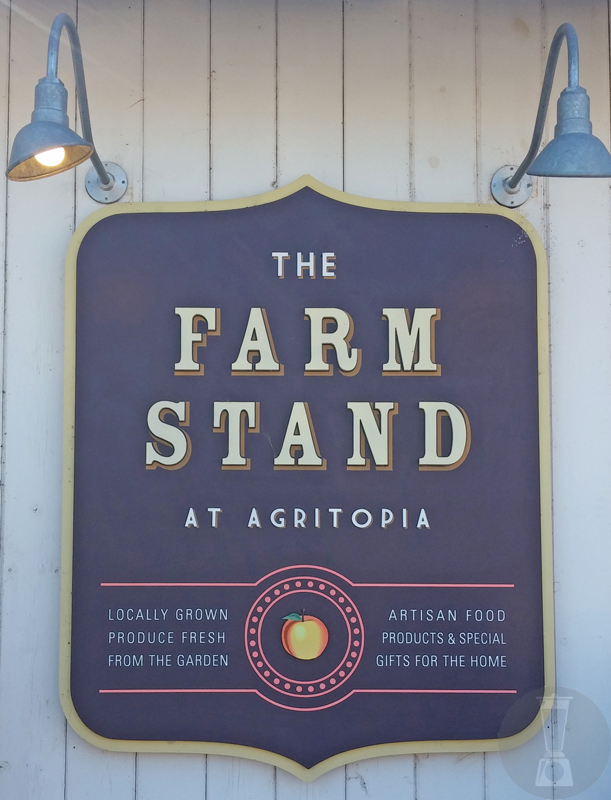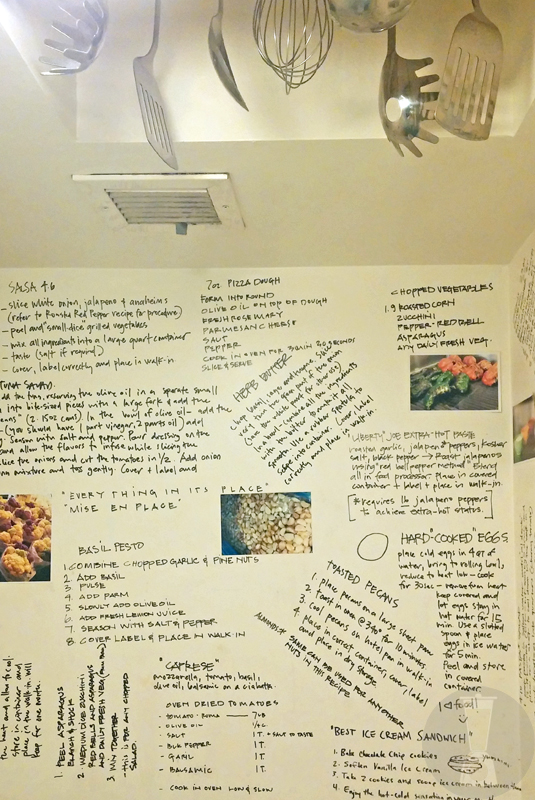![Joe Johnston - Agritopia, Gilbert, Arizona [dailyblender.com]](https://dailyblender.com/wp-content/uploads/2015/05/joe.jpg)
“Hello, Jennifer Heigl,” I said, looking up briefly from the menu, introducing myself.
“You’re the one who ran the catering business,” he responded confidently, shaking my hand.
A man who’s done his research.
From the pick of his shoes to the pin on his lapel, it was clear that he was a details man, the kind who strategizes, inquires, does his homework. As we took our seats for breakfast, Joe and I met at the end of the table, the head of the conversation, and as we started our small talk, it quickly became more than just pleasant chitchat. He jumped in with business questions, about building my catering business, and changes within the restaurant industry. I went into interview mode, curious about his family’s history on the land, his professional evolution to restaurateur, the story behind the one-of-a-kind “agrihood” surrounding us.
 Indeed, Agritopia is a neighborhood like none other. Developed in the early 2000s, after a string of successful coffee shops made Joe Johnston a local celebrity of sorts, it is an oasis in the desert, an agricultural Utopia. A working farmland sits at the heart of the property, with Joe’s Farm Grill, a small Farmer’s Market, and a coffee shop (packed with yoga Moms and strollers at 11 am) perched on one side. A small community of single-family homes, a retirement center, community center, and Christian school anchors the other half. Many residents tend to their designated boxes in the community garden, while the central urban farm provides produce for Joe’s family of local restaurants.
Indeed, Agritopia is a neighborhood like none other. Developed in the early 2000s, after a string of successful coffee shops made Joe Johnston a local celebrity of sorts, it is an oasis in the desert, an agricultural Utopia. A working farmland sits at the heart of the property, with Joe’s Farm Grill, a small Farmer’s Market, and a coffee shop (packed with yoga Moms and strollers at 11 am) perched on one side. A small community of single-family homes, a retirement center, community center, and Christian school anchors the other half. Many residents tend to their designated boxes in the community garden, while the central urban farm provides produce for Joe’s family of local restaurants.
It all makes sense when you take a tour through the tree lined streets, and you wonder why there aren’t more agriculture-focused, planned communities in the country. Johnston has considered the full lifecycle with his planning of the area, both of the residents and of the farm. He is an entrepreneur and pioneer – brilliant in the calculation and execution of his business endeavors – and yet delightfully humble.
The Business of Food
Q: How many restaurants do you currently have in operation?
A: Three – Joe’s Farm Grill here in Agritopia, as well as Liberty Market and Joe’s Real BBQ in downtown Gilbert.
Q: How involved are you in those day-to-day operations?
A: I’m a vision partner. My role is basically to make sure that our vision is being accomplished. Direct the vision. Making sure the vision we have for each restaurant elevates, making sure the gap between the vision and reality is always narrowing. When it starts to widen, I work with those operating partners.
Q: What really makes your restaurants stand out from the crowd?

We have a multi-concept group. We have that buying power and bargaining capacity with purveyors that chains generally have, and we have high unit volumes. But each one has its own personality.
I judge restaurants a lot by their restrooms. Each restaurant restroom is very unique. It shows the personality behind each unit. Both the Farm Grill and Liberty were nominated for the best restroom. There are five different ones at Liberty – each of their own view and personality. I believe the cleanliness of a restaurant’s kitchen is in correlation with the cleanliness of a restaurant’s bathrooms.
Q: How did you learn about the restaurant industry?
A: Restaurants are not rocket science. You are essentially in the manufacturing business. That means process control, quality of materials going in. It involves making sure we’re using the best technique, best knowledge as we can. Unlike other manufacturing, you get to see the start to finish in a very short time. And you actually get to observe the user. Starting with raw materials ending with a satisfied customer.
In creating a restaurant, I know what I like to eat, and I see things in other markets that would work well in our markets, but need to be adapted. My general approach is to talk to people who have already done it. Most people will talk with people an hour or so.
In regards to our Coffee Plantation shops, we really didn’t have anything other than coffee shop (Denny’s) coffee, and we didn’t have anything like we had in Stanford, the bohemian coffee shops. So we traveled to San Francisco and Portland and talked to people who were doing it.
Researching and finding people. That’s how we did it with each idea. Within the same market, people won’t talk about it. So I had to go to another market to discuss it.
Q: Have there been any key moments of learning during your time as an entrepreneur?
A: Yes. When we were managing the original unit of Coffee Plantation. We didn’t realize upfront that we weren’t necessarily in the coffee place business, but more in the meeting place business. We didn’t really understand the concept of the third place until I read The Great Good Place by Ray Oldenburg.
In it, he talks about the third space, that there are places where you can hang out, and there’s a lot of social dialogue and interaction with people of all different ways of life. Oldenburg talks about beer gardens, donut shops. I didn’t really understand until I read those key points.
To succeed, a solid third space must include:
- A low barrier to entry. The lower the selling price of your item, how you’re monetizing, is better because it opens the doors to everybody.
- A non-directed experience. Restaurants are often not third places, because they set the pace and control your time. None of our units are full service. You can stay at any of our units for as long as you like.
- In the third place, it’s the personality of the regulars that sets the tone. Develop a core of regulars, explain to people how it works, and then it will build the pattern of life that anchors people.
It’s about creating a community. So we’ve gone from creating community within individual locations, to creating a larger community.
A New Kind of Community
Q: What’s next in the evolution of Agritopia?
A: We’re still working on the economics of the epicenter we plan to build. Planning-wise, a lot of good things. We’re also working on Project Q, microrestaurants and whatnot. Working with the city, with the architects. There will be 14 to 16 artisan companies, small companies, that are very focused on their passion projects. Right next to the coffee shop here on the Agritopia property. The Epicenter will be for people who want to practice their art, not manage people. I know a lot of people, particularly artists, don’t want to manage people. They just want to just do their art. Our spaces will be 220-550 square feet.
I’m a decent observer of people. I’m very interested in people’s giftedness. I think there’s just a lot of people who would like to do their craft.
Q: Will there be additional homes built here in Agritopia?
A: There will be 250 apartments over the Epicenter. It’s a true vertical mixed-use project. Unusual here, pretty usual in Portland. Our goal is to be a super successful restaurants/retail/service, coupled with a very comfortable residential community.
On most lots within Agritopia, you can build two units. 450 lots, 600 residences, max build out is 700 homes. There are 120 serviced apartments at the assisted living complex as well, so with the addition of the apartment, it should break 1000 units.
![Agritopia, GIlbert, Arizona [DAILYBLENDER.COM]](https://dailyblender.com/wp-content/uploads/2015/05/ag9.jpg)
![Agritopia, GIlbert, Arizona [DAILYBLENDER.COM]](https://dailyblender.com/wp-content/uploads/2015/05/ag6.jpg)
![Neighborhood farms at Joe Johnston's Agritopia, GIlbert, Arizona [DAILYBLENDER.COM]](https://dailyblender.com/wp-content/uploads/2015/05/ag4.jpg)
![Agritopia, GIlbert, Arizona [DAILYBLENDER.COM]](https://dailyblender.com/wp-content/uploads/2015/05/ag3.jpg)
![William and Joe Johnston, Agritopia, GIlbert, Arizona [dailyblender.com]](https://dailyblender.com/wp-content/uploads/2015/05/ag7.jpg)
You can read about the rest of my visit to Arizona here.
~Jennifer Heigl
*Photo credit: Jennifer Heigl / Daily Blender
